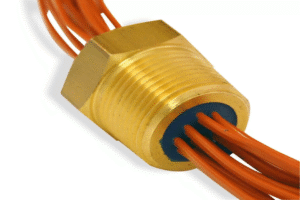A Borrower’s Guide to Hard Money Documents – What You’ll Need
3 min read
It is well known within financial circles that hard money lenders require significantly less documentation than their traditional counterparts. Not only that, but all the necessary documents can also be submitted upfront. There is no need for a hard money lender to continue contacting a borrower for weeks on end in search of new documentation.
If you are new to hard money as a borrower, you will be happy to know that a mountain of documentation is not your future. You will need to prepare and provide at least some documents with your application. But by and large, the volume is comparatively low.
1. Purchase and Sale Agreement
Salt Lake City-based Actium Lending says the vast majority of hard money deals support real estate transactions. So in most cases, borrowers must submit a signed contract to purchase a property. The contract should include transaction terms, purchase price, and earnest money deposit. This is proof that the borrower has a property under contract.
2. Proof of Identity
Even though hard money lenders are not licensed financial institutions, they are still required to verify borrower identities. Therefore, a borrower will have to submit two acceptable forms of identification. Things like driver’s licenses and passports are completely acceptable.
If the borrower represents a business entity, appropriate documents will be required. Articles of incorporation, a certificate of good standing, or a legal operating agreement should suffice.
3. Evidence of Financial Liquidity
Hard money lenders typically don’t ask for documentation regarding income. They do not ask for W2s or paystubs. But they need to be reasonably assured of borrower liquidity. So they often ask for documentation to that effect. Acceptable documents include things like bank statements and tax returns.
4. Property Documents
Certain property documents are required when hard money loans are backed by real estate – and most are, by the way. Lenders want to see a reliable property appraisal and a recent inspection report. Some lenders will conduct their own appraisals as well.
Appraisals and inspections are important to lenders because the property in question acts as collateral on the loan. Remember that hard money lending is asset-based. That means collateral and its value are everything. Without the proper documentation, a lender will not even look at an application.
5. Preliminary Title Report
Not all hard money lenders require a preliminary title report, but most do. This is a report that shows the property in question has a clear title. That means there are no liens or encumbrances on the property. Why does this matter?
Liens and encumbrances are entered in the order that they are filed. Should a property be disposed of, creditors are paid in the same order they are listed in the title. No hard money lender wants to be in the second or third position. They want to be in the first position in order to guarantee they recoup their money. So liens and encumbrances are a no-go.
6. Loan Application Form
Last but not least is the loan application form. It could be as short as one page or as long as several. It just depends on how the lender does things.
A loan application form includes information about the type of loan requested along with the loan amount, intended use of funds, exit strategy, and relevant property details. Lenders are more than happy to help borrowers fill out complicated forms correctly.
With these six pieces of documentation, a borrower is all set. Experienced borrowers can get everything together before applying for a loan, thus guaranteeing a fairly quick answer. Approval should mean equally quick underwriting and funding.







